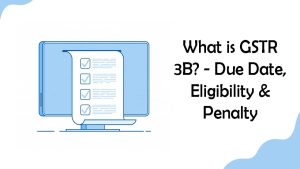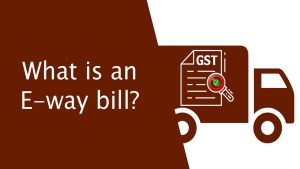What is GST Invoicing?
GST Invoicing – A GST Invoice is a statement or receipt for goods supplied or services rendered to a client by a merchant or service provider. It details the services/products purchased, as well as the total money payable. One can examine a GST invoice to ascertain the pricing of goods or services before CGST and SGST are applied.
Additionally, a GST invoice bill shows the amount of taxes imposed on each good or service purchased from a seller or provider.
A GST invoice is a document that details the services and items transferred from the seller to the buyer, as well as the amount of money owed to the seller by the latter.
An invoice or GST bill is a document that details the products or services delivered, as well as the amount owed for payment.
The term invoice may be regarded as a business document issued by the seller or provider of an item or service to the customer. Generally, an invoice provides the facts of the transaction of sale which includes the product name, quantity, price, etc. The conditions of payment are mainly indicated on the invoice. An invoice is also known as a bill.

Types of Invoices
- Bill of Supply
A bill of supply is quite similar to a GST invoice except for that bill of supply does not have any tax amount as the seller can’t charge GST to the buyer.
- Aggregate Invoice
When the value of multiple invoices is less than Rs. 200 and the buyer is unregistered, the seller can issue an aggregate or bulk invoice for the numerous invoices every day.
- Debit and Credit Note
A debit note is issued by the seller when an amount payable by the buyer to the seller goes up. A credit note is issued by the seller when the value of the invoices goes down.
When is Issuing a Tax Invoice Not Mandatory?
A supplier can avoid issuing a GST invoice only under the following two conditions –
• The recipient in the transaction is unregistered.
• When the recipient expresses that he/she does not need such an invoice.
Bear in mind that both of these criteria must be met in order for a provider to avoid being required by law to issue a GST invoice. Rather than that, the registered provider can produce a combined tax invoice at the end of each day for all of the aforementioned supplies.
Invoice Format in GST
A tax invoice issued under GST describes the products and services provided, as well as the amount owed for payment. The details or contents of the tax invoice are as follows:
- Name and address of the supplier
- GSTIN of the supplier
- Serial number
- Date of issue
- Name and address of the recipient.
- State and its code of the recipient, in case the taxable supply is more than 50,000/-.
- HSN Code
- Description
- Quantity/Unique Quantity Code
- Total Value
- Taxable Value
- Rate of Tax
- Tax Charged Amount
- Place of supply in case of inter-state supply
- Delivery Address
- Reverse Charge if any
- Signature of the Supplier
In the event of exports, the tax invoice will include an endorsement stating “Supply Meant For Export on Payment Of IGST” or “Supply Meant For Export Without Payment Of IGST”. This tax invoice will include the following information:
- Name and Address of the Recipient
- Delivery Address
- Destination Country Name
- Date of Application for Export
- Number of Application For Export
FAQs on GST Invoice
01. What is the distinction between invoice date and due date?
The invoice date means the date when the invoice is created on the bill book, and the due date is when the payment is due on the invoice.
Q2. Is it important to maintain invoice serial numbers?
Yes. The serial number should be maintained strictly.
Q3. Can I digitally sign my invoice?
Yes. You can digitally sign through DSC.
Q4. How many copies of Invoices should be issued?
For goods, it is 3 copies and for services, it is 2 copies.



